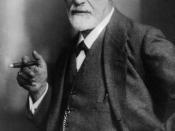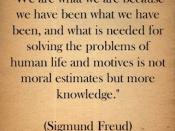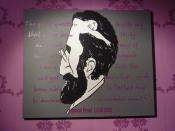Sigmund Freud's "Three Essays on the Theory of Sexuality", written in 1905, attempted to trace the course of the development of the sexual instinct in human beings from infancy to maturity. This instinct is not simply an animal instinct but is specific to both human culture and the form of conscious and unconscious life we live within it. For Freud sexuality is infinitely complicated and far-reaching in its effects and forms the basis of self-identity and interactions. His Third Essay discusses the transformations of puberty in both males and females. Part four of this essay focuses on the differentiation between male and female sexuality. Freud states in this part that 'as far as the autoerotic and masturbatory manifestations of sexuality are concerned the sexuality of little girls is of a wholly masculine character' . This paper will attempt to identify the assumptions that lead Freud to this contention, whilst also providing an assessment of Freud's account of the distinctions between 'active and passive' and 'masculine and feminine'.
Freud begins his discussion by noting that while it is true that masculine and feminine dispositions are already easily recognisable in childhood, it is not until puberty that a sharp distinction may be drawn between the two sexual characters. Freud identifies in young girls a tendency to sexual repression to a greater degree than is found in little boys. Young girls also tend to develop inhibitions to sexuality, the negative repressive emotions such as shame, disgust and pity, at an earlier stage than little boys and submit to these emotions with less resistance. According to Freud, little girls prefer the passive form of sexual gratification in relation to the compound erotogenic zones identified in infantile sexuality. Having noted this, however, Freud contends that infantile autoerotic activity and the erotogenic zones are...


